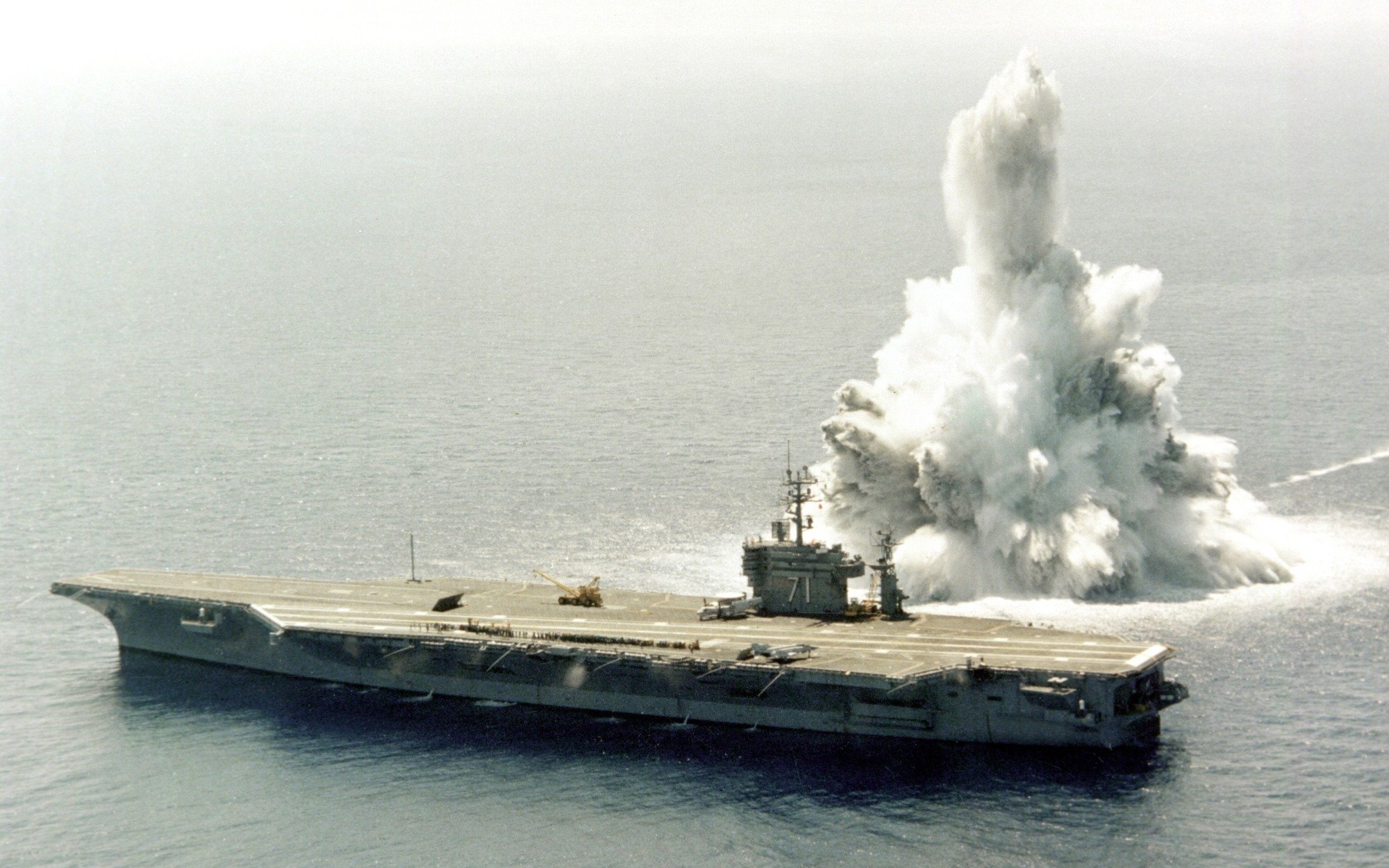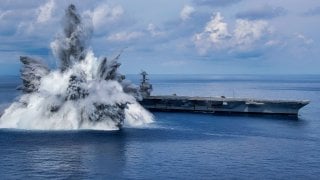Sink a Navy Aircraft Carrier: How China Starts a 'Nuclear World War III'
China’s military strategy includes potentially sinking U.S. aircraft carriers to dominate in a Taiwan conflict, as Admiral Lou Yuan suggested in 2019, banking on the notion that American casualties would deter further U.S. involvement.
What You Need to Know: China’s military strategy includes potentially sinking U.S. aircraft carriers to dominate in a Taiwan conflict, as Admiral Lou Yuan suggested in 2019, banking on the notion that American casualties would deter further U.S. involvement.

-However, such an action would not only devastate the U.S. Navy, killing thousands and costing billions, but it might also trigger a nuclear escalation.
-American leaders would be forced to respond decisively, possibly with extreme measures, risking global catastrophe.
-This strategic gamble by China, counting on U.S. restraint in a high-casualty scenario, may underestimate America’s commitment to maintaining its standing and protecting allies.
If China Sinks US Aircraft Carriers, It Might Trigger a Nuclear War
With war fever gripping the capitals of the world’s great powers, many are wondering when the biggest conflict of all—the war between China and the United States over the fate of tiny, democratic Taiwan—will erupt.
It’s a fair question.
But some have suggested that it is a useless fear scenario, given that the war would undoubtedly be costly to both sides, and they’d eventually back away from the idea of fighting each other once the costs became clear.
If war did occur, the main battlefield would be the waters near China and Taiwan.
In a naval war, the United States would likely deploy its most powerful naval platform, the aircraft carrier. China understands this. That’s why they’ve spent the better part of a decade build their anti-access/area-denial (A2/AD) systems throughout the region to better defend against the threat of US carriers.

These A2/AD networks are meant to keep the American carrier force over-the-horizon, away from any potential conflict zone, long enough to allow for Chinese forces to run roughshod over their prize, such as Taiwan.
Sinking Two Aircraft Carriers
Back in 2019, People’s Liberation Army Navy (PLAN) Admiral Lou Yuan, one of the most hawkish leaders of China’s military said that the best way to “resolve” the Taiwan crisis in China’s favor would be to sink “two U.S. aircraft carriers.” Admiral Lou explained further that, “What the United States fears most is taking casualties. We’ll see how frightened America is.”
Sinking two US Navy carriers would cause upwards of 10,000 deaths, a massive loss of equipment, and tens of billions of dollars being lost as a result. What’s more, the images of two US carriers being sunk (or even just burning and damaged) would be sufficient enough for China to convince much of the Global South to abandon their support for the US dollar and assist in the creation of an all-new global currency, the BRICS dollar. After all, the image of US carriers being destroyed by Chinese weapons would be ultimate symbol of the end of America’s power.
But would that be the end of any such crisis with China? Or would the United States respond? Could it respond?
A Terrible Choice for America
The fact of the matter is that the Chinese, with their A2/AD systems, believe they have the ultimate deterrent against the deployment of powerful US carriers in their near-abroad. American leaders understand the kind of threat that these A2/AD systems pose to the expensive and large flat tops that comprise the base of the US Navy’s surface fleet.

Beijing is calculating that the Americans won’t even want to risk these expensive systems. If the A2/AD networks could not be destroyed, then Washington would hold the carrier force in reserve, leaving it to smaller surface warships and submarines. While dangerous, China’s military thinks they can handle these threats.
Avoid This Reality At All Costs
Destroying or damaging a carrier that kills and wounds thousands of sailors, though, would likely evoke a strong reaction from the Americans. Of course, if the American are unable to deploy their forces close enough to strike back at China due to those A2/AD systems, then the Americans will look even more impotent. That’s when things like nuclear retaliation come into play.
And that’s when we start getting very bleak.
Frankly, no US politician could afford to do nothing in the face of such carnage. So, while the Chinese might be able to defeat US carriers, there would be such a vigorous response from the Americans that the Chinese would suffer mightily as a result.
Do not doubt, however, that the current leadership in Beijing is arrogant enough to risk such an outcome, notably because they do not think the Americans have the capacity or will to protect their perceived interests when it comes to Chinese brinkmanship.
About the Author:
Brandon J. Weichert, a National Interest national security analyst, is a former Congressional staffer and geopolitical analyst who is a contributor at The Washington Times, the Asia Times, and The-Pipeline. He is the author of Winning Space: How America Remains a Superpower, Biohacked: China’s Race to Control Life, and The Shadow War: Iran’s Quest for Supremacy. His next book, A Disaster of Our Own Making: How the West Lost Ukraine, is available for purchase wherever books are sold. Weichert can be followed via Twitter @WeTheBrandon.
Image Credit: Creative Commons image of 'shock trials' images from the U.S. Navy.
Image Credit: Creative Commons.


